It’s no secret that the savviest marketers use psychology to influence consumer behavior. And why not? All is fair in love and war. Over the last century, competition for all industries has grown so fierce that marketing professionals must develop a methodology to stand out. The brand archetypes are an effective means of going about this process.
While businesses in small markets can succeed without effective branding, it has become increasingly unlikely. The current commercial landscape has evolved into a winner-take-all monoculture as markets in various industries grow and consolidate.
For most businesses, building brand equity is their only hope of survival.
CREATING BRAND EQUITY
Simply put, brand equity refers to how people perceive a business. It has less to do with a product or service and more with establishing a relatable culture. It’s quite possibly the most valuable asset a business can have.
Brand equity should be guarded with a similar fervor that early humans must have had when protecting fire–as if their livelihood depended on it.
Defining your brand persona is paramount, as it is the cornerstone of your identity in the market. It establishes a clear and consistent personality that resonates with your target audience, facilitating meaningful connections and loyalty.
A well-defined brand persona guides your communication, from marketing strategies to customer interactions, ensuring alignment with your values, mission, and desired perception. A distinct and authentic brand persona sets you apart in a competitive landscape, fostering trust, recognition, and lasting relationships with consumers.
This is why it’s so important for businesses to Invest in defining their brand persona. It’s not just a choice but a strategic necessity for sustainable success.
SO, WHO ARE YOU?
The answer to this question is the vision that breathes life into all ensuing questions. Developing a clearly defined brand that elicits a powerful emotional connection with your audience is the absolute goal of branding. Companies like Amazon, Apple, Nike, and Coca-Cola have refined the branding process with an elegant and artful approach.
We often fail to consciously detect the subtlety of effective branding as it seamlessly integrates into our daily experiences. Good branding operates on a level that feels effortless, yet its impact is profound. It subtly communicates who we are presently and embodies our aspirations and ideals, presenting a unified image that resonates with us more deeply.
Masterful branding transcends the narrow-mindedness of transactions and enters the subconscious realm. People don’t think twice about throwing their hard-earned money at the aforementioned companies for a simple reason – they identify with their branding on a deep, psychological level.
This type of branding is essentially storytelling. It draws upon timeless mythologies that have shaped human consciousness from our earliest days. Given our natural affinity for narratives, what better method exists to capture people’s imaginations—and ultimately, their attention and loyalty—than through the power of storytelling?
DISCOVERING THE 12 BRAND ARCHETYPES
Marketers have borrowed generously from Jungian archetypes and created a model for developing brand identity. Carl Jung was one of the most influential psychiatrists who ever lived. His theory of archetypes has had a profound impact on the way we understand the world, the way we tell stories, and the way marketers go about developing a brand.
Jungian archetypes organize universal personas that evoke relatable images and motifs. These shapes are molded by history, culture, and personal experience. They are specific enough to be personal and vague enough to be universal.
Mother. Child. King. Journey.
Even though these words elicit 7 billion varieties of personal feelings, they also carry an acute universality. This can be called upon to solidify brand messaging. Heady stuff? You bet. Useful? Absolutely.
So, without further delay, let’s dig deeper into the 12 Brand Archetypes.
MEETING THE BRAND ARCHETYPES
Here is an overview of the 12 brand archetypes. These archetypes include various personality traits that can appeal to nearly any audience. The key to successful branding is careful archetype selection and consistent messaging. Attempting to speak to everyone is ill-advised. It is far more effective to speak very clearly to a defined audience.
Business loyalty is about relatability. Humans don’t want to be like everyone else. We want to be different. We want to stand out. But we also want to connect. Using the brand archetypes helps establish a sense of belonging that we desperately long for.
Choosing an archetype can be a lot harder than it sounds. It’s difficult to go back once you’ve made a decision. For example, Harley Davidson (clearly a Rebel brand) will unlikely start selling family-friendly minivans to soccer moms. It wouldn’t make sense. Their audience would be bewildered. Just as McDonald’s will never be a viable candidate for receiving a Michelin Star.
Know your audience. Now, let’s get to know the Jungian brand archetypes.
The Creator Archetype
Expressive, original, and imaginative
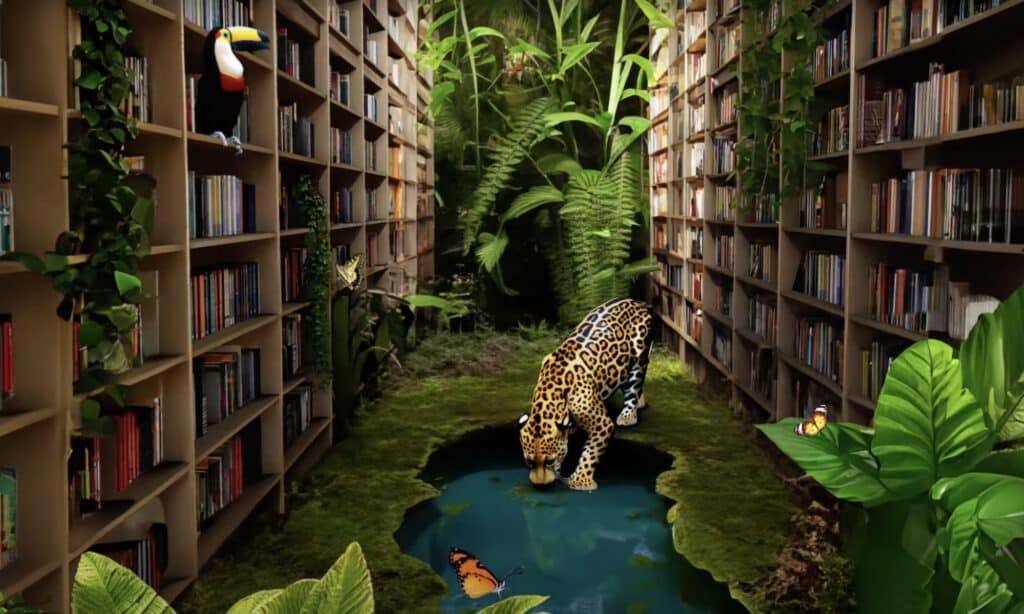
Image credit: Adobe Photoshop
The fundamental desire of the Creator Archetype is to create something of lasting value. Brands that encourage self-expression, choice, and innovation personify the Creator archetype. Their messaging is imaginative and encouraging.
Goal: Turn ideas into reality
Desire: Create the perfect product or service
Fear: Creative block
Strategy: Use creativity to solve problems
Example brands: Adobe Photoshop, Apple, and Pinterest
THE HERO Archetype
HEADSTRONG, DETERMINED AND FOCUSED

Image credit: Nike / Colin Kaepernick
The Hero archetype displays courage by enduring what is difficult to make the world a better place. This is done through exemplifying mastery and overcoming adversity. Hero brands strive to help by addressing social problems and encouraging people to take action.
Goal: Improve the world
Desire: To prove worth through courageous acts
Fear: Weakness, vulnerability, and fear
Strategy: Motivate and encourage bravery
Example brands: Nike, Red Cross, Army
THE REBEL Archetype
FREE-SPIRITED, INDEPENDENT, AND BREAKING CONVENTION

Image credit: Doc Martens
The Rebel archetype is all about revolution and destroying the status quo. These brands are not timid about disruption and deeply value freedom. They seek to blaze new trails with their revolutionary attitudes.
Goal: Overthrow what isn’t working
Desire: Be revolutionary
Fear: Being powerless
Strategy: Shake things up
Example brands: MTV, Harley Davidson, Lady Gaga
THE LOVER Archetype
APPRECIATIVE, COMPASSIONATE, AND COMMITTED
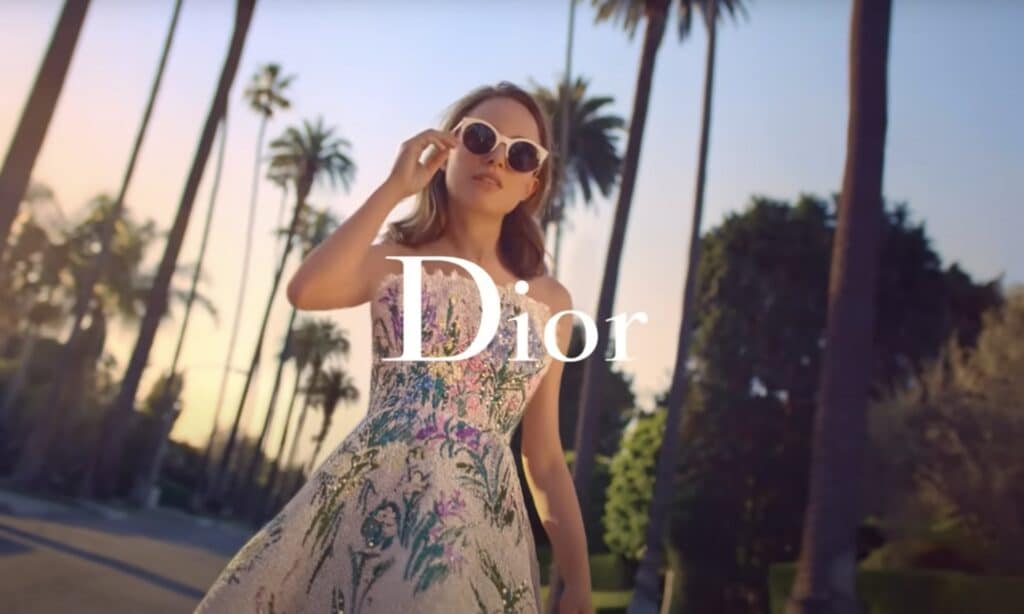
Image credit: Dior
More than anything in the whole wide world, the Lover archetype wants to experience intimacy and connection. Through different levels of relationship with the people around them, Lover brands help people find love and friendship through beauty, communication, and closeness.
Goal: Experiencing beauty
Desire: Connection
Fear: Being unloved
Strategy: Feeling good
Example brands: Gucci, JVN, Hallmark
THE CITIZEN Archetype
INCLUSIVE, UNPRETENTIOUS, AND RESILIENT
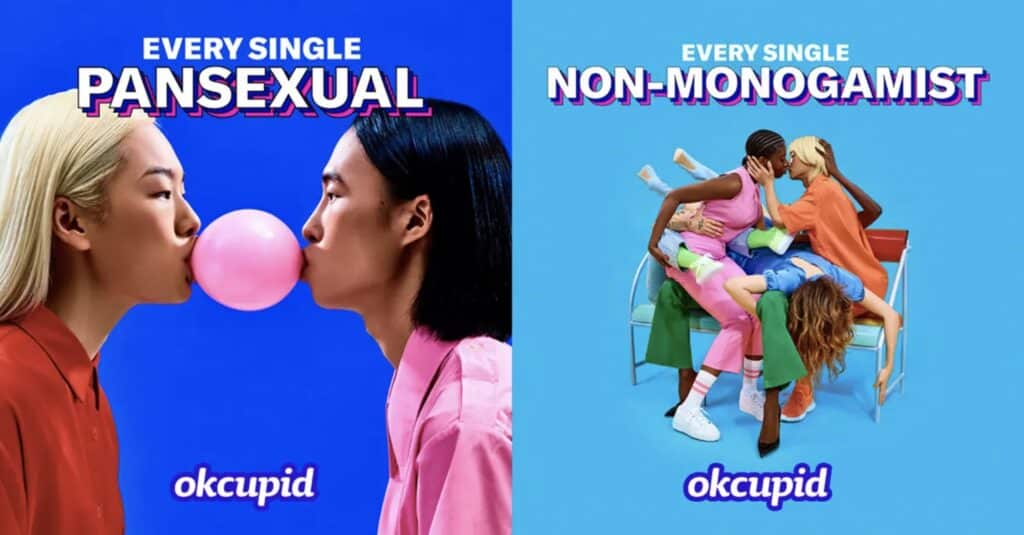
Image credit: OkCupid / Source: Adweek
The Citizen archetype wants nothing more than to belong, fit in, and connect with others. The Citizen archetype is evident in brands that have a down-to-earth culture. They seek to create things used in everyday life and desire to help people feel that they belong.
Goal: Belonging
Desire: Being dependable and trustworthy
Fear: Being left out
Strategy: To be a down-to-earth, straight shooter
Example brands: Budweiser, Levis, IKEA
THE SAGE Archetype
INTELLIGENT, KNOWLEDGEABLE, AND REFLECTIVE

Image credit: NPR
The Sage archetype is guided by a search for the truth. These brands use research and analysis to comprehend the world around them. Look at brands that are thought leaders in their industries, providing expertise and encouraging people to think.
Goal: Understand the world through intelligence and analysis
Desire: To find the truth
Fear: Appearing ignorant
Strategy: Seeking out information and knowledge
Example brands: NPR, TED, James Clear
THE EXPLORER Archetype
INDEPENDENT, AUTHENTIC, AND CURIOUS
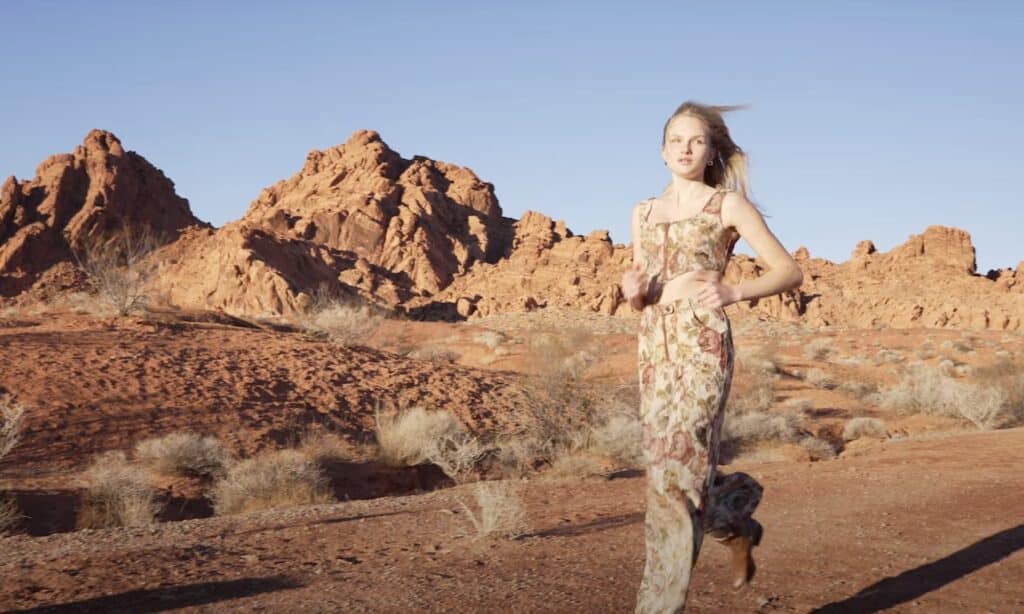
Image credit: Urban Outfitters
The Explorer archetype wants the freedom to discover the world and experience a more authentic and fulfilling life. In addition to being non-conformist, Explorer brands want to help people feel free. They are pioneering and provide products and services that promote versatility.
Goal: To live an exciting and fulfilling life
Desire: To have the freedom to explore and discover
Fear: Feeling trapped
Strategy: Take the road less traveled
Example brands: REI, Urban Outfitters, Spotify
THE INNOCENT Archetype
IDEALISTIC, OPTIMISTIC, AND HOPEFUL
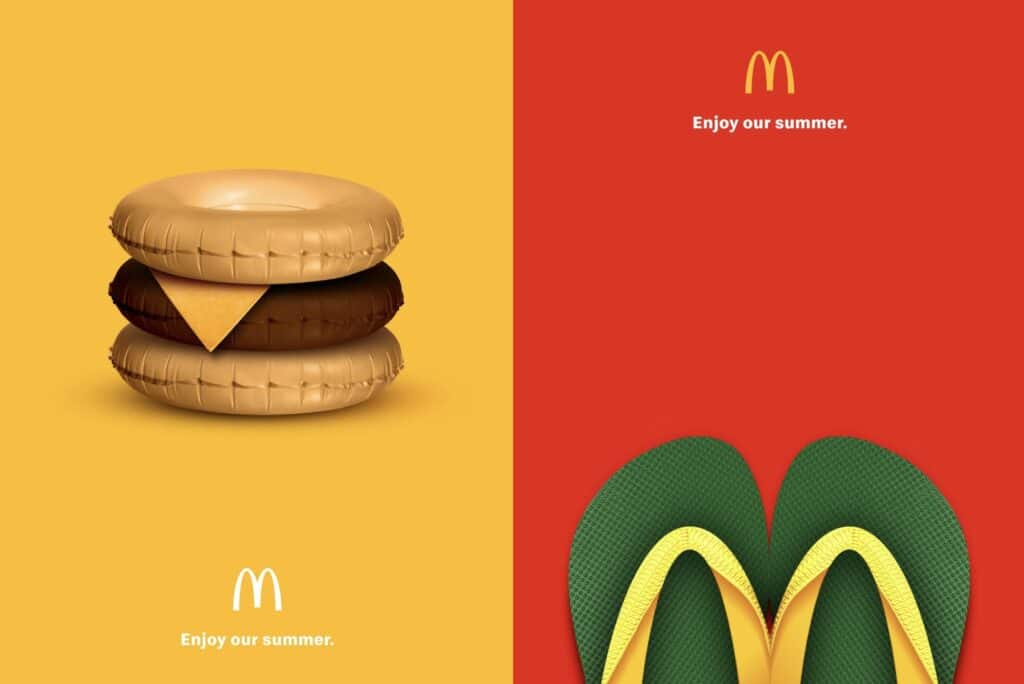
Image credit: McDonald’s / Source: Yahoo
The motto of the Innocent archetype could be summed up as, “Don’t worry, be happy.” They desire to find and experience paradise. Idealistic brands associated with morality, goodness, and nostalgia are identified as Innocent archetypes.
Goal: Simplicity
Desire: Love, peace, and happiness for all
Fear: Being punished for wrongdoing
Strategy: Do the right thing and be optimistic
Example brands: Aveeno, Coca-Cola, Chobani
THE Ruler Archetype
IDEALCONFIDENT, COMPETENT, AND RESPONSIBLE
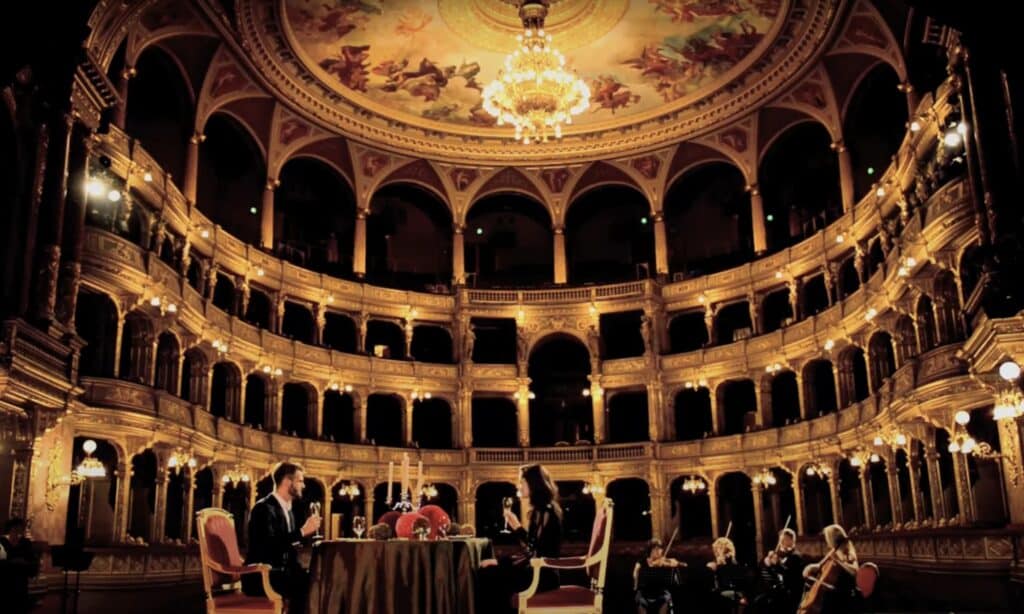
Image credit: Four Seasons Hotel and Resorts
The Ruler archetype is all about control. They want to create a successful and prosperous family, company, or community. Ruler traits are evident in brands that promote power. Helping people get and stay organized and promising safety and stability are hallmarks of the Ruler archetype.
Goal: Create prosperity and success
Desire: To have control
Fear: Chaos and being overthrown
Strategy: Exercise power and influence
Example brands: American Express, Louis Vuitton, Rolls Royce
THE JESTER Archetype
PLAYFUL, SPONTANEOUS, AND HUMOROUS
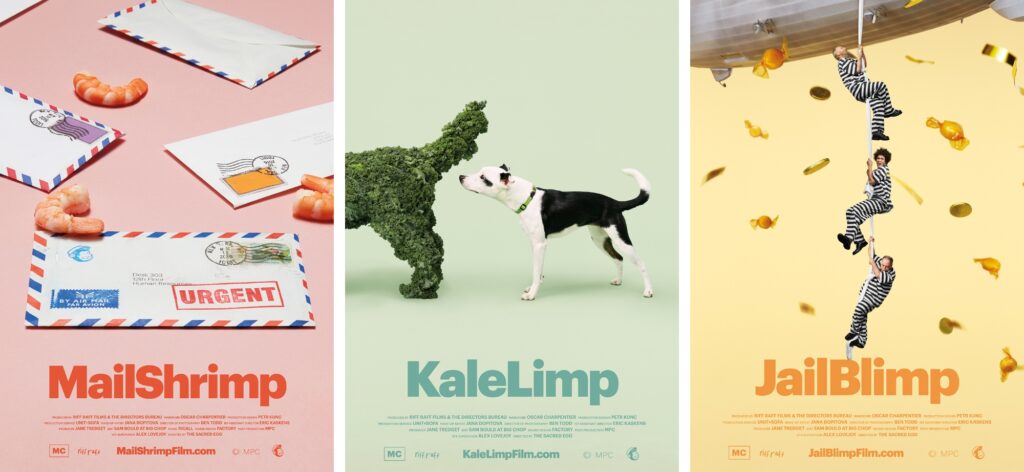
Image credit: Mailchimp / Source: It’s Nice That
The Jester archetype is akin to the class clown from high school. They want a life full of enjoyment, helping people have a great time, and lightening up the world. Behind the playful laughter, you will see brands that help people enjoy life by embracing a fun-loving, freewheeling culture.
Goal: Bring laughter, fun, and joy to the world
Desire: To enjoy life while having fun
Fear: Boredom
Strategy: Be curious, playful, and fun
Example brands: Snoop Dogg, Geico, M&M’s
THE CAREGIVER Archetype
COMPASSIONATE, NURTURING, AND DEDICATED
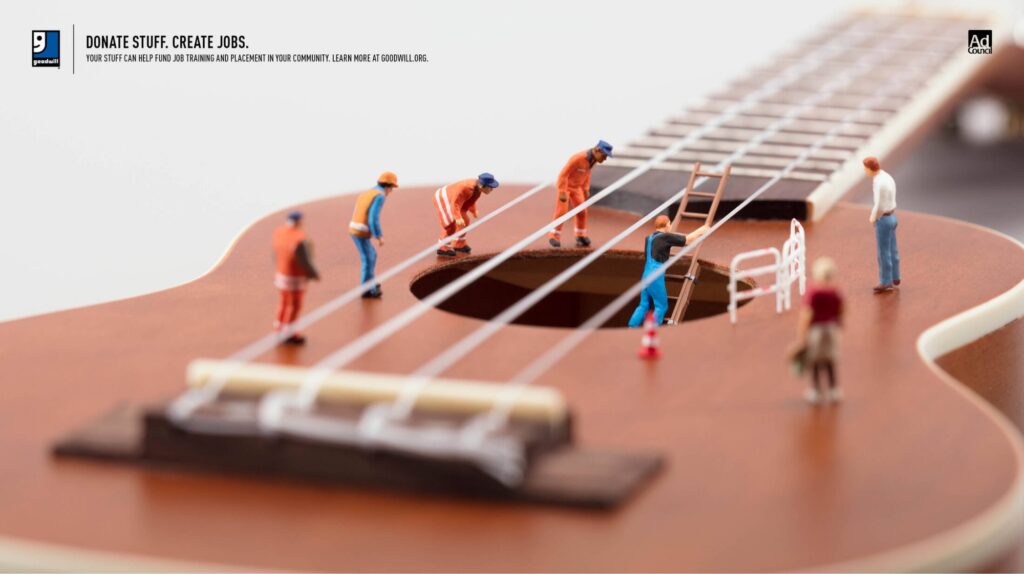
Image credit: Goodwill / Source: Ads of the World
The goal of the Caregiver archetype is to protect people from harm. They enjoy going the extra mile to help others. Brands that serve families and concentrate on providing excellent customer service exemplify classic Caregiver archetype traits.
Goal: Help others
Desire: To care, protect, and nurture
Fear: Neglect and instability
Strategy: Help others
Example brands: Headspace, Campbell’s, Toms
THE MAGICIAN Archetype
INTUITIVE, INSIGHTFUL, AND INSPIRING

Image credit: Walt Disney World
The Magician archetype makes dreams come true by knowing how the world works. Magician brands are transformative. It’s not uncommon for them to display traits that have a spiritual or psychological element. They want to expand our collective consciousness.
Goal: To turn dreams into reality
Fear: Unintended negative consequences
Strategy: Create a unique vision and live by it
Example brands: Disney, Dyson, Polaroid
THE TAKEAWAY
We hope this overview of the 12 brand archetypes has been illuminating and thought-provoking. Branding is often overlooked in day-to-day business operations but is vital to success. The most successful businesses go to great lengths to refine their brand messaging. It doesn’t happen by accident.
Developing a focused brand personality bridges the gap between business and consumer by allowing you to speak directly to the heart of your intended audience. The 12 brand archetypes are an excellent starting point when venturing down the branding rabbit hole.
Contact Astute Communications if you’re ready to begin your journey to the heart of your brand. We love to explore.
